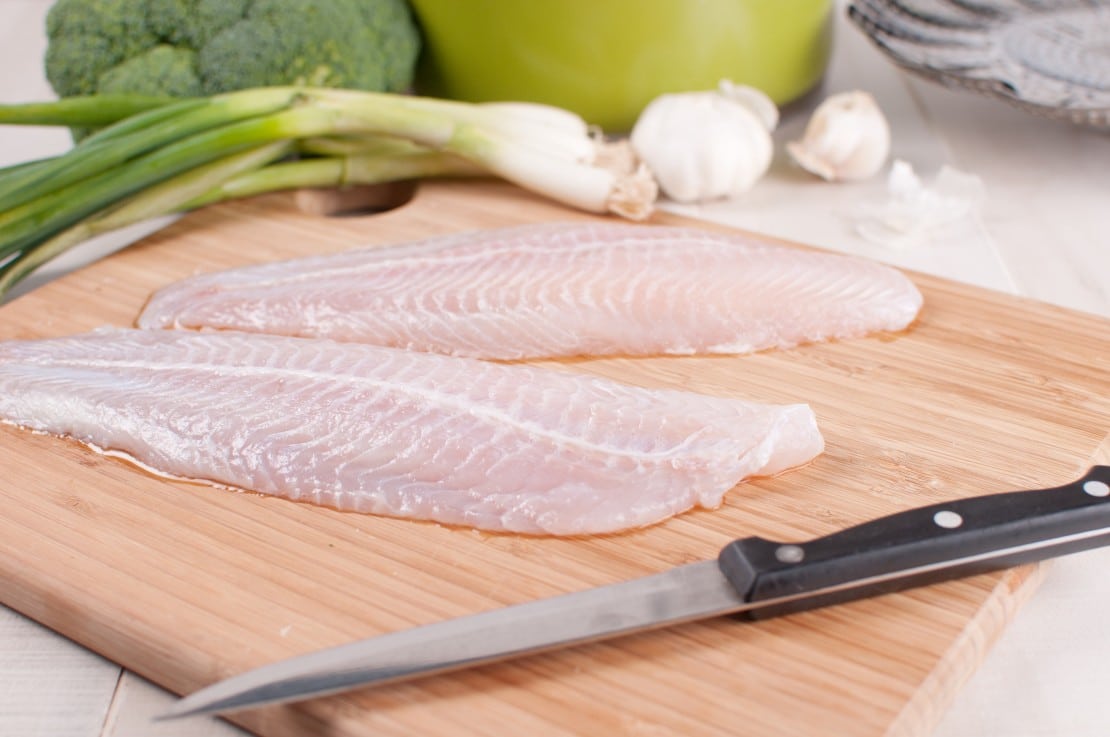Fish is a delicious, nutritious and economical food. In addition, there are countless recipes that can be prepared with it. Today we show you how to defrost fish so that it retains all its nutritional properties, texture and flavor.
Having frozen fish at home or in your catering business is always a very good option to create healthy and nutritious recipes and meals any day of the week.
It doesn’t matter if it is frozen hake, frozen cod or other white fish. Following one of the three procedures explained below will help you to defrost fish effectively.

Thawing fishinside the refrigerator
The safest and easiest way to defrost a fish is to remove it from the freezer and leave it in the refrigerator at a temperature equal to or below 5 °C (41 °F). Try to place it as far away from the door as possible.
Gradual defrosting makes it possible to keep the fish in the best possible condition. But keep in mind that this process is slow. For every three kilograms of fish you will have to wait a full day. It is clear that you will need good planning if you are inclined to use this method.
Undoubtedly, if you want to enjoy the best fish and it is good to do the thawing at low temperature, as opposed to the freezing process, which should be as fast as possible and with the lowest temperatures. Deep-freezing is carried out at a temperature lower than -40ºC, thus preserving its physical and nutritional properties to the maximum.
Soaking in water
This method is relatively fast. It consists of placing the frozen fish in a tightly closed bag and immersing it in water at a temperature of 24 °C or less. Each kilogram takes about 45 minutes to thaw.
It is important to change the water every half hour, or sooner. This will ensure that the food is kept at the right temperature. Large specimens should be divided into smaller pieces, as the process should not take more than two hours.
Use the microwave
This method is the fastest, but also the one that will require the most attention on your part. Many modern microwave ovens have a special option for defrosting food. There are even models that allow you to specify the weight of the piece.
Regardless of the characteristics of your equipment, you must be vigilant at all times, as there is a risk that the heat will start to cook the edges of the fish. We recommend turning the fish halfway through the process. This will contribute to a more even thawing.
We recommend using the microwave or cold water, only if the piece exceeds three kilos or you need to thaw the fish to cook it immediately. On the other hand, if the pieces are thin or light, or there is not so much urgency to cook them, it is better to defrost them in the refrigerator. The wait will be worth it.






He oído que descongelarlo en leche es exquisito.a no parece congelado?q
¡Hola Willy!
Se puede sustituir el agua por leche como bien comentas, pero los beneficios e inconvenientes de hacerlo son similares a los que se producen descongelando el pescado en agua.
Lo más recomendable es descongelarlo en el frigorífico.
Gracias por tu comentario y un saludo
Si respondes esto respecto a descongelar con leche es que, con todos mis respetos, no tienes ni idea o no lo has probado.
La leche impide que las fibras del pescado se rompan al descongelarse. Ahí, es nada.
Por tanto una vez cocinado, no tiene nada que ver. Parece fresco y una exquisitez.
Buenas Lola, como habrás podido leer en nuestro artículo, no hacemos referencia en ningún momento a la descongelación con leche. Sí puede ser uno de los métodos para descongelación, pero no el más recomendado.
Descongelarlo dentro del frigorífico
La forma más segura y fácil de descongelar un pescado consiste en sacarlo del congelador y dejarlo en el refrigerador a una temperatura igual o menor a 5 °C. Procura colocarlo lo más lejos posible de la puerta.
Gracias, pero ¿se debe quitar el envoltorio ( plástico) y dejarlo “desnudo” o taparlo con qué?
Tengo una duda. Tengo un recipiente de silicona para microondas y lo que hago es meter lomo pequeño de salmon directamente congelado y lo pongo como unos 5-8 minutos. Es verdad que sale un poco mas seco pero crees que es correcto?
Buenas Sara, esa opción sería para cuando quieres prepararlo para el momento. Al descongelarlo en el microondas de esta forma pierde sabor. Lo recomendable es dejarlo descongelar el día de antes en el frigorífico y cocinar una vez descongelado. Esperamos haberte ayudado. ¡Gracias!
Lo mejor sacarlo del congelador y a la nevera .Lo tendremos unas 5 ó6 horas.Luego a cocinarlo y ya está
Al descongelarlo en el frigorífico queda demasiado lleno de agua, luego al ponerlo en la plancha empieza a soltar agua y se cuece, ¿Hay que hacer algo antes? Yo he probado a secarlo con papel de cocina pero sigue soltando mucha agua al ponerlo en la plancha, gracias.
Hola Javi, lo ideal para que escurra el agua es colocarlo sobre un recipiente con rejilla y un plato debajo para que el líquido se quede sobre este y no toque el producto. ¡Un saludo!
Se puede poner en agua hirviendo directamente sin descongelar?
Buenas María, sí es una de las opciones, aunque la más recomendable como hemos comentado sería descongelarlo previamente.
Hola buenos días! Puedo congelarlo una vez apanado???
Hola Jorge, si el pescado está congelado lo ideal es consumirlo tras cocinarlo. No se recomienda volverlo a congelar ya que supone un riesgo para la salud pues al descongelarlo se reactiva la actividad de los patógenos que viven en él.
Hola
Se debe quitar el envoltorio del pescado mientras se está descongelando?
Buenas Gabi, lo ideal sería descongelarlo sin envoltorio, sin tapar y en el frigorífico sobre un recipiente con rejilla.